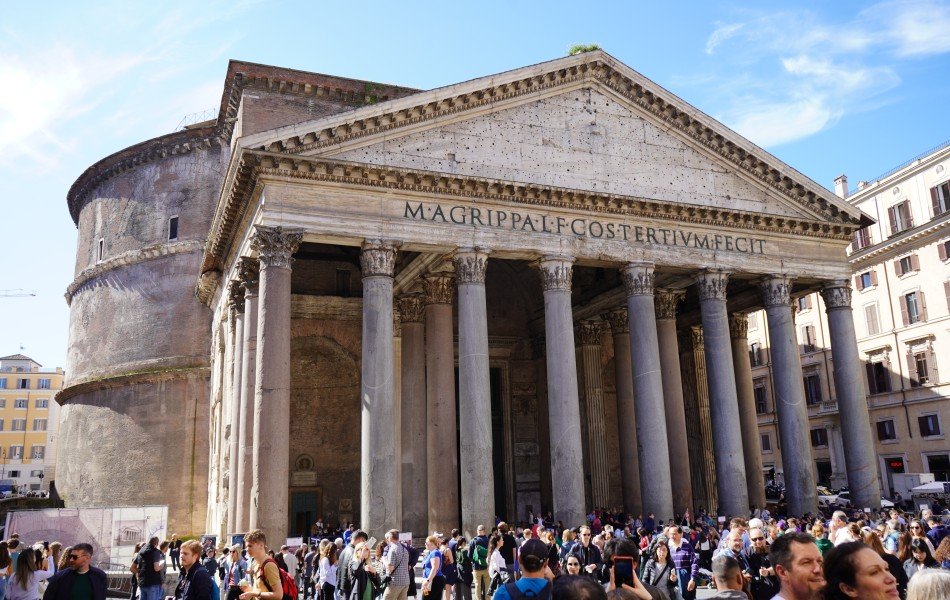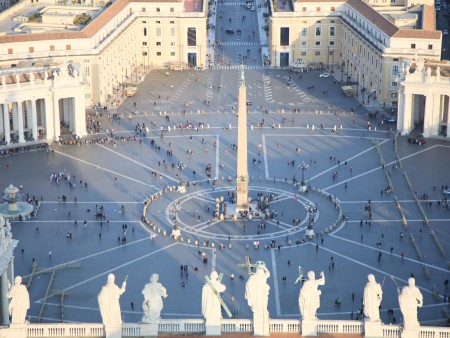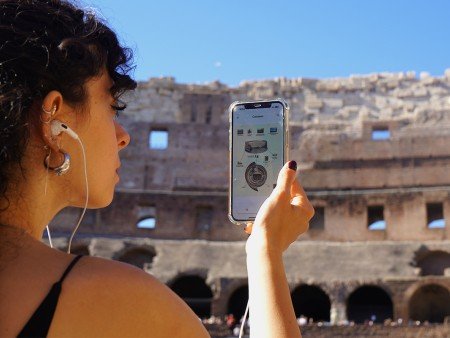Discovering the Pantheon: 11 Must-See Highlights of Rome's Ancient Marvel
The top 11 attractions at the Pantheon in Rome, including its iconic dome, royal tombs, and ancient Roman architecture

02 October 2024
Things to do in RomeThe Pantheon, one of Rome's most iconic monuments, is an architectural masterpiece and a site of great historical significance. Originally built as a temple dedicated to all the gods of ancient Rome, today it is a Christian basilica and one of the city's most visited tourist attractions. Here are the 11 must-see things when you visit the Pantheon.
1. The Monumental Facade
The Pantheon's facade is one of the first things to catch your eye. Designed in a classical style, it features sixteen Corinthian granite columns supporting a triangular pediment. The Latin inscription on the pediment, "M·AGRIPPA·L·F·COS·TERTIVM·FECIT," means "Marcus Agrippa, son of Lucius, consul for the third time, built this." This inscription dates back to the original construction of the temple, commissioned by Agrippa in 27 BC.
2. The Bronze Doors
Passing under the facade, you come to the massive bronze entrance doors, weighing over twenty tons. These original doors date back to the Roman era and are an extraordinary example of ancient engineering and craftsmanship. Walking through these doors connects you directly with the millennia-old history of Rome.
3. The Dome
Once inside, the Pantheon's dome is the first element that captures your gaze. With a diameter of 43.3 meters, it was the largest dome in the world for over 1,300 years. Its construction in concrete, without steel reinforcements, is considered a marvel of ancient engineering. The dome represents the sky, and the central hole, or oculus, symbolizes the sun. The light that enters through the oculus creates an almost mystical atmosphere within the building.
4. The Oculus
The oculus, a circular opening 9 meters in diameter at the center of the dome, is the only source of natural light inside the Pantheon. This architectural feature not only illuminates the building's interior but is also symbolically connected to the gods of the sky. During the summer solstice, the sun's rays penetrate directly through the oculus, spectacularly illuminating the entire space.
5. The Royal Tombs
The Pantheon houses the tombs of some of Italy's most important rulers. Among them is the tomb of Victor Emmanuel II, the first king of unified Italy, and that of his son Umberto I. These royal tombs are significant not only from a historical perspective but also as symbolic resting places for the architects of Italian unity.
6. The Tomb of Raphael
Another highly significant tomb is that of the famous painter and architect Raphael Sanzio, one of the masters of the Renaissance. His burial in the Pantheon reflects the enormous respect that Rome and Italy have always had for him. Above his tomb, a plaque reads: "Here lies Raphael, whom Nature feared would surpass her while he lived, and when he died, feared she herself would die."
7. The Side Chapels
Inside the Pantheon, there are several side chapels, each with its own history and works of art. Each chapel is dedicated to a saint or an important figure, and many contain paintings and sculptures from different eras, ranging from the Renaissance to the Baroque. One of the most famous is the Chapel of the Madonna of the Rock, which houses a statue of the Virgin attributed to Lorenzetto, a pupil of Raphael.
8. The Original Marble Floor
The Pantheon's floor is still the original from the Roman era, made of polychrome marbles sourced from all over the Roman Empire. The geometric design of squares and circles extends across the entire interior surface, creating a striking effect. Walking on this floor is like stepping back nearly two thousand years, into the heart of Roman history.
9. The Niches of the Gods
Originally, the Pantheon was a temple dedicated to all Roman deities, and the niches along the interior walls housed statues of these gods. Although they are now empty or occupied by Christian artworks, these niches represent the Pantheon's original function as a pagan temple, making it unique among surviving ancient buildings.
10. The Christian Altars
After the Pantheon was converted into a Christian church in 609 AD, several altars dedicated to saints and holy figures of Christianity were added. The main altar is dedicated to the Madonna and houses a particularly revered 13th-century icon. These Christian altars mark the transformation of the Pantheon from a pagan temple to a Christian place of worship, a testament to the religious and cultural continuity of Rome.
11. The Rose Window on the Facade
Finally, above the main entrance is a rose window, a circular window that adds an additional element of symmetry and beauty to the Pantheon’s structure. Though smaller in size compared to the oculus, the rose window contributes to the interior lighting and overall aesthetics of the building.
The Pantheon is much more than just a monument: it is a place where history, art, and architecture come together in a unique experience. Every element, from the grand dome to the tombs of great historical figures, tells a part of Rome's story. Visiting the Pantheon means immersing yourself in centuries of history, admiring a masterpiece that continues to inspire and fascinate millions of people every year.
Our categories:
You may also be interested ...

Vatican Private Tour with Sistine Chapel & St. Peter's Basilica: Renaissance’s Wonders
Private tour
Discover with a skip the line Private Vatican Tour the Sistine Chapel, Vatican Museums and St Peter’s Basilica
starting from: € 275

Colosseum Guided Audio Tour with Roman Forum and Palatine Hill
Private tour
Discover Ancient Rome’s secrets and history with our immersive Colosseum guided audio tour, rich in image and content
starting from: € 51 € 42